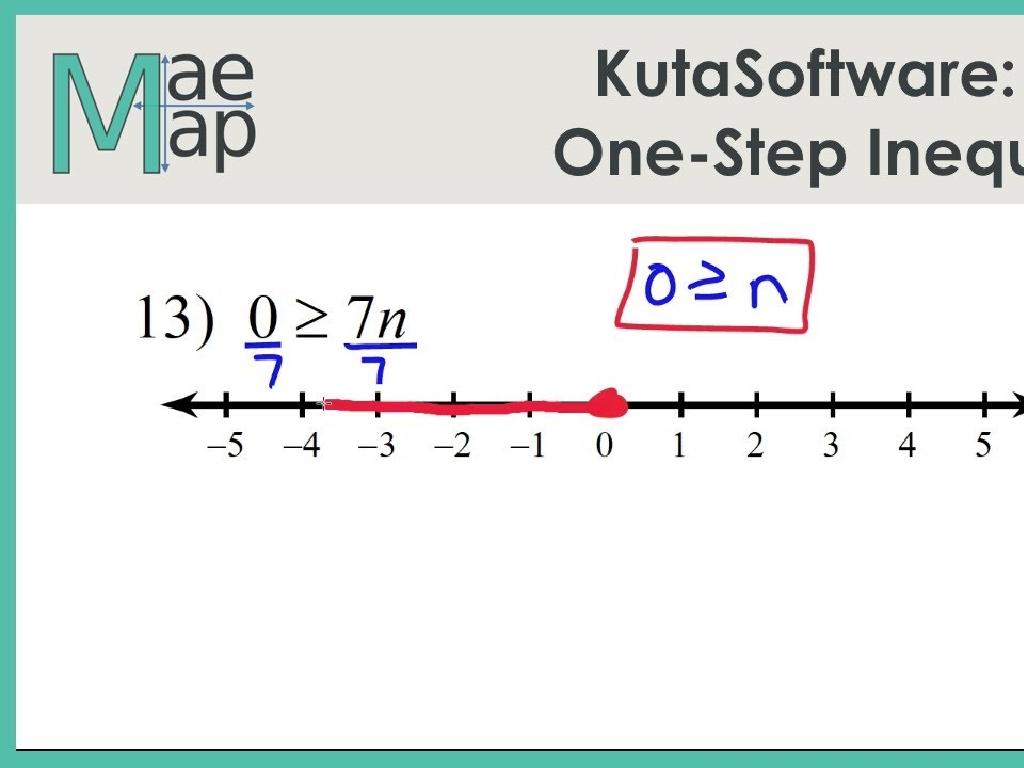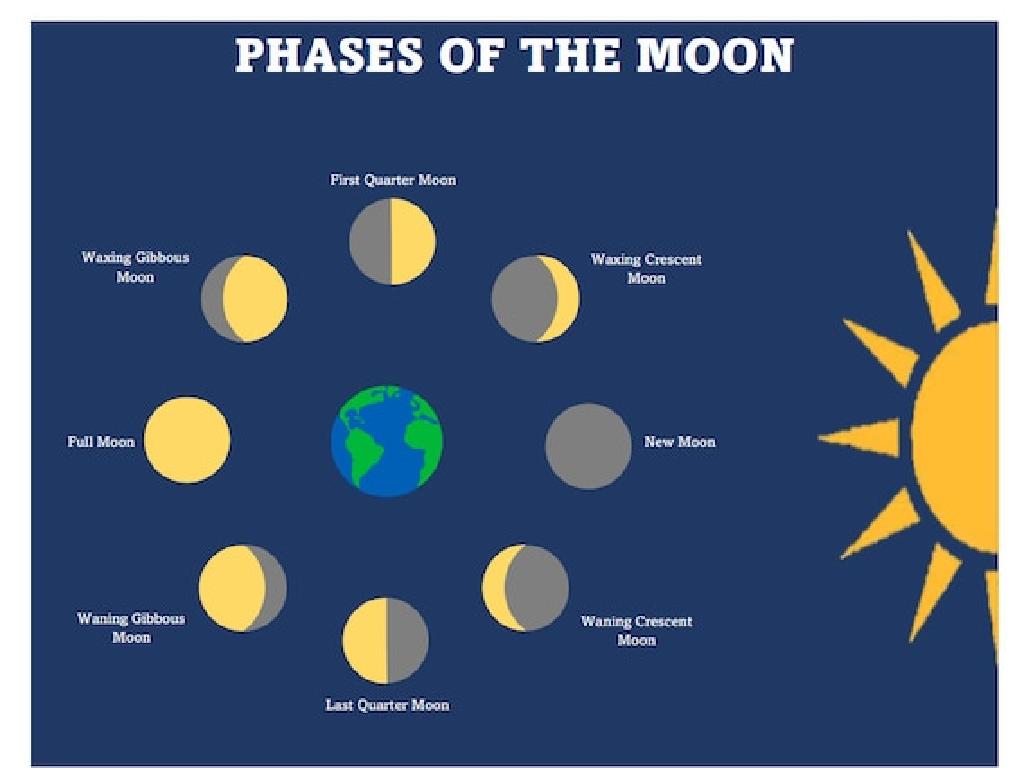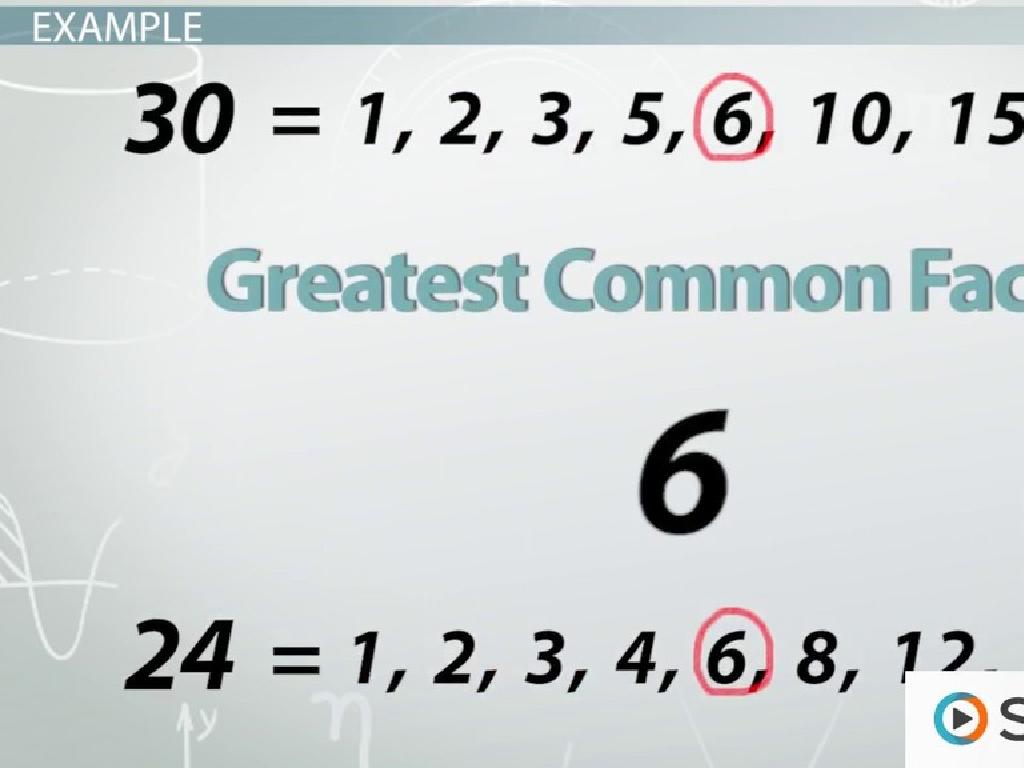Choose The Multiples Of A Given Number Up To 10
Subject: Math
Grade: Fourth grade
Topic: Factors And Multiples
Please LOG IN to download the presentation. Access is available to registered users only.
View More Content
Today’s Adventure: Multiples!
– What are multiples?
– Multiples are results of multiplying a number by integers.
– Multiples in daily life
– Like in music, rhythms follow patterns of multiples.
– Finding multiples up to 10
– Use skip counting to find multiples of a number.
– Practice with examples
|
Begin the lesson by explaining the concept of multiples as the product of a number and any whole number. Use relatable examples such as rhythms in music or objects in groups to illustrate how multiples appear in everyday life. Demonstrate how to find multiples of a given number up to 10 by skip counting, for example, multiples of 2 are 2, 4, 6, 8, 10, 12, 14, 16, 18, 20. Encourage students to practice finding multiples with different numbers and provide them with exercises to reinforce the concept. This will help them understand the practical applications of multiples and see the patterns in numbers.
Understanding Multiples
– What is a multiple?
– A multiple is a product of a number and an integer.
– Multiples of 2 example
– For 2: 2×1=2, 2×2=4, 2×3=6, 2×4=8…
– Every number’s infinite multiples
– Finding multiples up to 10
– Practice by choosing multiples of numbers 1-10
|
This slide introduces the concept of multiples to fourth-grade students. Begin by defining a multiple as the result of multiplying a number by an integer. Use 2 as an example to list its multiples, showing that you simply multiply 2 by 1, 2, 3, and so on. Emphasize that every number has endless multiples, but for the exercise, students will focus on finding multiples up to 10. Encourage students to practice with different numbers between 1 and 10 to solidify their understanding. As an activity, students can list multiples of given numbers and share with the class to check their understanding.
Finding Multiples of Numbers
– Learn to find multiples
– Multiples of 5: 5, 10, 15, 20, …
– Counting by fives to find multiples of 5
– Practice: First five multiples of 3
– 3, 6, 9, 12, 15 are multiples of 3
– Skip counting to find multiples
– Skip count by the number to find its multiples
|
This slide is aimed at teaching fourth graders how to find multiples of a given number through skip counting. Start by explaining that multiples are what we get when we multiply a number by integers like 1, 2, 3, and so on. Use the multiples of 5 as an example to show how skip counting works. Then, engage the class in an interactive activity to find the first five multiples of 3 together. Encourage students to count aloud in threes to reinforce the concept. The goal is for students to understand that finding multiples is like adding the number to itself over and over again. Make sure to provide additional examples and practice opportunities for the students.
Multiples Up to 10
– Understanding multiples up to 10
– Examples: Multiples of 4 (4, 8)
– Multiples of a number are found by multiplying the number by 1, 2, 3, etc.
– Practice: Find multiples of 6
– Use counters or drawings to help find multiples of 6
– Share your answers with the class
– We’ll discuss as a group and learn from each other
|
This slide introduces the concept of multiples, specifically focusing on those up to 10. Begin by explaining what multiples are and how to find them by giving the example of 4. Show that 4 and 8 are multiples of 4 because 4×1=4 and 4×2=8. For the practice activity, ask students to identify the multiples of 6 up to 10. They can use visual aids like counters or draw groups to help them understand. After the activity, encourage students to share their answers. This will allow them to learn from each other and clarify any misunderstandings. The teacher should be prepared to guide the students through the process and provide positive feedback to reinforce their learning.
Patterns in Multiples
– Discovering patterns in numbers
– Even numbers have even multiples
– For example, 2 x 4 = 8 and 2 x 5 = 10, both results are even
– Using patterns to find multiples
– Patterns like skip counting can help us identify multiples faster
– Practice with multiples up to 10
– Let’s find multiples of 2, 5, and 10 together
|
This slide introduces students to the concept of patterns within multiples, particularly focusing on the patterns found in even numbers. Emphasize that recognizing these patterns can make finding multiples much easier and quicker. For instance, if a number is even, all of its multiples will also be even. This is a simple pattern that students can observe and use to their advantage. Encourage students to practice by skip counting by 2s, 5s, and 10s to find multiples of these numbers up to 10. This exercise will help solidify their understanding of multiples and prepare them for more complex multiplication tasks.
Multiples in Real Life
– Multiples in nature and daily objects
– Petals on flowers as multiples
– Some flowers have petals in multiples of a number, like 3 or 5.
– Car wheels as multiples
– Cars often have 4 wheels, which is a multiple of 2.
– Think of more real-life multiples
– Encourage students to find objects with quantities that are multiples of numbers up to 10.
|
This slide aims to show students how the concept of multiples is not just a mathematical idea but is also present in the world around them. By observing nature and everyday objects, students can relate to multiples more concretely. For instance, the number of petals on many flowers or the wheels on cars can be examples of multiples. During the discussion, prompt students to think of other examples where multiples are evident, such as the segments of an orange, eggs in a carton, or pencils in a pack. This will help them understand and identify multiples in various contexts, reinforcing their learning through real-world connections.
Class Activity: Multiples Scavenger Hunt
– Understand multiples up to 10
– Work in pairs to find classroom items
– Find a buddy and start the hunt together
– Identify items with multiples
– Look for items in sets, like 6 crayons or 8 markers
– Share findings with the class
|
This interactive activity is designed to help students recognize and understand multiples in a fun and engaging way. By working in pairs, students will search the classroom for items that come in multiples up to 10. This could be anything from a pack of pencils to a set of books on a shelf. Encourage them to count and verify that the number of items is a multiple of a number up to 10. After the scavenger hunt, each pair will present their findings to the class, explaining how they determined the items were multiples. This will reinforce their understanding of multiples and allow for peer learning. Possible variations of the activity could include finding multiples of a specific number, or timing the scavenger hunt for added excitement.
Great Job on Multiples!
– Celebrate your hard work today
– Multiples are everywhere in life
– Like in music, sports, and clocks
– Practice finding multiples at home
– Try with your age, or objects in a room
– Keep up the great learning!
|
This slide is meant to wrap up the lesson on multiples and to congratulate the students on their effort and understanding. Emphasize the presence of multiples in everyday life, such as rhythms in music, points scored in games, or numbers on a clock. Encourage students to continue practicing by finding multiples of numbers that are relevant to them, like their age or counting items at home. Reinforce the idea that practice is key to mastering the concept of multiples. The goal is to leave the students with a sense of accomplishment and the motivation to apply what they’ve learned outside of the classroom.






